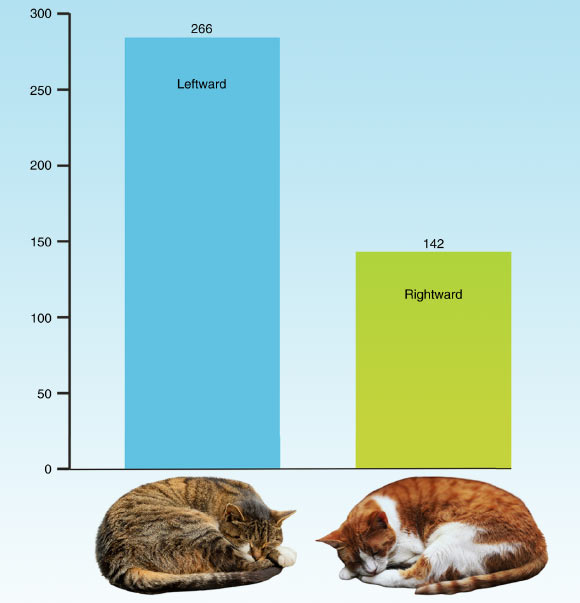New research led by scientists from the Ruhr-University Bochum, the University of Prince Edward Island, Ankara University and the University of Bari Aldo Moro shows that two-thirds of domestic cats (Felis silvestris catus) prefer a leftward sleeping position, giving their left visual field and thus their right brain half a privileged view of approaching animals without being obstructed by their own body.
Isparta et al. believe that the significant leftward bias in sleeping position in cats may have been evolutionarily driven by hemispheric asymmetries of threat processing. Image credit: Noah Dustin von Weissenfluh / Gleb Kuzmenko / Isparta et al., doi: 10.1016/j.cub.2025.04.043.
“Sleep is one of the most vulnerable states for an animal, as anti-predator vigilance is drastically reduced, especially in deep sleeping phases,” said Ruhr-University Bochum’s Professor Onur Güntürkün and colleagues.
“Domestic cats are both predators and prey (e.g., for coyotes) and sleep an average of 12-16 hours a day.”
“Therefore, they spend almost 60-65% of their lifetime in a highly vulnerable state.”
“To reduce predation risks, cats prefer to rest in elevated positions so that predators are more visible to them and the cats, in turn, are more visually concealed from predators.”
“In such a spot, predators can access cats only from below.”
“Thus, their preference for resting in an elevated position can provide comfort, safety, and a clear vantage point for monitoring their environments.”
In the study, the authors analyzed 408 publicly available YouTube videos featuring a single cat in a clearly visible sleeping position while lying on one side, with an uninterrupted sleep duration of at least 10 seconds and full-body visibility from head to hind legs.
Only original, unaltered videos were included, while low-resolution, obscured, duplicated, or modified (e.g., mirrored/selfie) videos were excluded.
Their results revealed a statistically significant leftward bias at the population level with 266 cats (65.1%) showing a leftward sleeping position and 142 cats a rightward one (34.8%).
“Cats that sleep on their left side perceive their surroundings upon awakening with their left visual field, which is processed in the right hemisphere of the brain,” the researchers said.
“This hemisphere is specialized in spatial awareness, the processing of threats and the coordination of rapid escape movements.”
“If a cat sleeps on its left shoulder and wakes up, visual information about predators or prey goes directly to the right hemisphere of the brain, which is best in processing them.”
“Sleeping on the left side can therefore be a survival strategy.”
The study was published in the journal Current Biology.
_____
Sevim Isparta et al. 2025. Lateralized sleeping positions in domestic cats. Current Biology 35 (12): R597-R598; doi: 10.1016/j.cub.2025.04.043

























